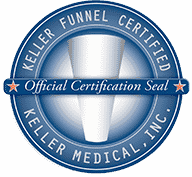Is silicone breast augmentation more popular these days? In a word, yes. However, there are some major advantages to both saline and silicone breast implants. There are also some crucial disadvantages to both types of breast implants. Let’s review the pros and cons of both saline and silicone breast implants. That way, you can make an educated decision about which is right for you.
Saline Implants
Both saline and silicone breast implants have a silicone outer shell. Silicone implants are filled with silicone gel, while saline implants are filled with a sterile saltwater solution. The main benefit of saline breast implants is that the body can easily absorb saline solution in case of rupture.
Another important advantage of saline implants is that Portland plastic surgery provider Dr. Michael Bohley can insert them into the implant pocket prior to filling them with the saltwater solution. Because of this, Dr. Bohley can use smaller incisions during breast augmentation surgery than he can with silicone implants. He can also customize the size of saline breast implants to fit each patient’s unique body type and surgical goals more easily than he can with silicone implants.
On the other hand, a principal drawback of saline implants is that they tend to be more noticeable under the surface of the skin. They are also more prone to folding inside the implant pocket, and to rippling. One last drawback is that saline implants may not look or feel as much like natural breasts as silicone breast implants do.
Silicone Implants
The principal benefit of silicone breast implants is that they very closely resemble natural breasts. That is one of the main reasons that silicone breast implants are so popular. Silicone breast implants also weigh less than their saline counterparts, allowing them to stay higher up on the chest and resist the effects of gravity over time.
One of the main drawbacks of silicone breast implants, however, is that those who have them have an increased risk of a rupture. Silent rupture occurs when silicone breast implants rupture, or leak, but patients do not realize this has occurred because the silicone gel filling material stays intact within the implant pocket. Furthermore, the body cannot naturally absorb silicone gel like it can absorb saline solution.
Silent rupture can be a dangerous condition. That is why Dr. Bohley recommends that breast augmentation patients who have silicone implants undergo a breast imaging exam (i.e., a mammogram or MRI) every three years, beginning the third year after breast enhancement surgery.
Another drawback of silicone implants is that patients who have them may have an increased risk of capsular contracture. Capsular contracture is an often painful condition in which fibrous scar tissue forms around implants, causing the breasts to feel exceptionally hard or implants to rupture. To prevent capsular contracture with silicone breast implants, Dr. Bohley recommends that patients massage the treated area and, again, undergo periodic breast imaging tests.
Even with these possible risks, more breast augmentation patients choose silicone breast implants instead of saline implants for their natural look and feel. However, only you and your plastic surgeon can ultimately decide which type of breast implants is right for you, given your unique anatomy and aesthetic goals.
To schedule a personal consultation with Dr. Bohley to learn more about breast augmentation surgery, please contact Dr. Bohley Cosmetic Surgery by calling (503) 253-3458 today.





